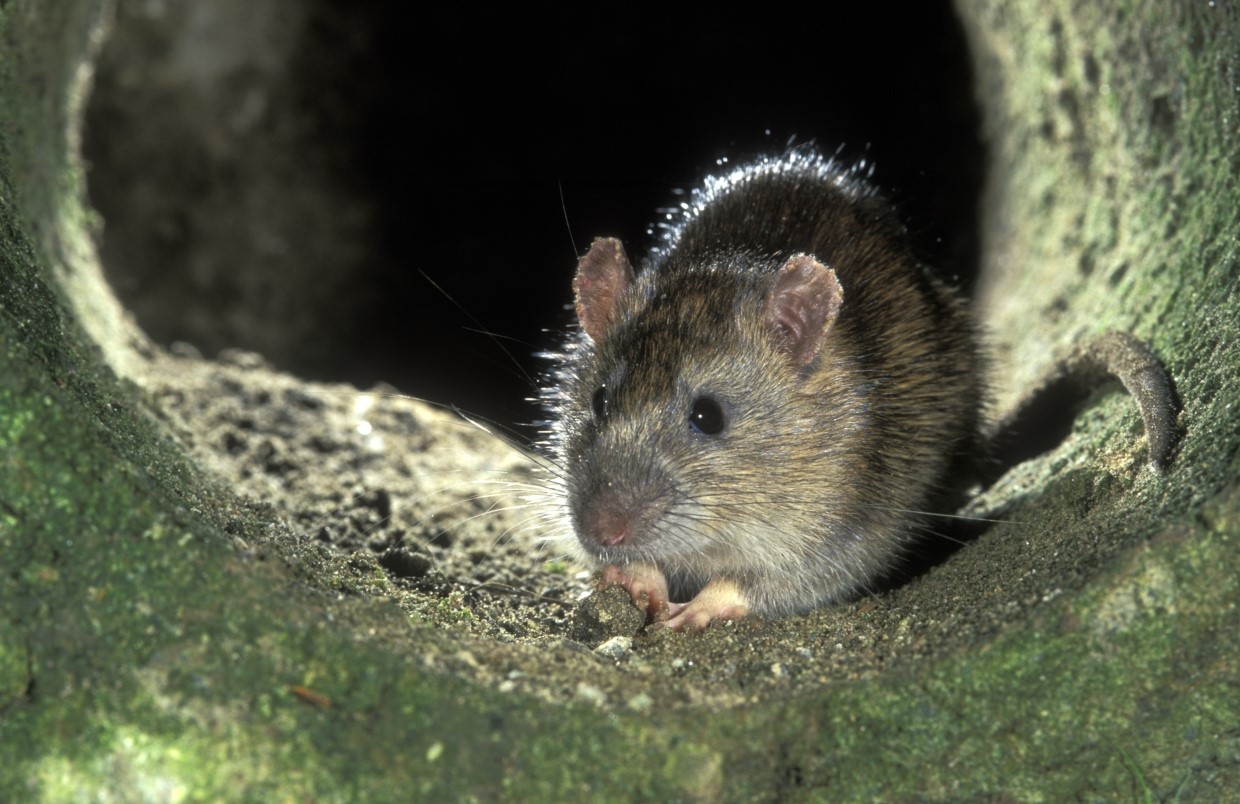Research on rat control (brown rat)

Rattus norvegicus (photo Rollin Verlinde - Vildaphoto)
Details
The brown rat (Rattus norvegicus) has developed from an Asian steppe inhabitant to a worldwide pest species relatively quickly. Due to its commensal lifestyle, it has benefited as a species from human success and therefore frequently causes- feeding damage
- gnawing damage
- burrowing damage
- infections
- loss of biodiversity
In Flanders and the Brussels Capital Region, the brown rat is also controlled in order to avoid damage. For the past 20 years the public authorities, both at regional and provincial level, have received scientific support from INBO. In the past, work was carried out on, among other things
- the resistance to rat poison
- the terrain use of brown rat and the optimisation of the control
- comparative tests of rat poison and trap systems
- the rat as a pathogens reservoir
- secondary intoxication
The previous cooperation agreement (2022-2025) has three main pillars:
- resistance to anticoagulant rodenticides
- cholicalciferol as an alternative rodenticide
- the development of a monitoring tool to map and follow up on control actions.
The current cooperation agreement (2025-2028) includes seven objectives:
- Monitoring the effectiveness and efficiency of control actions in collaboration with various partners
- Developing guidelines and a framework for rat control, intended to assist local authorities in evaluating control actions. This will take into account new and alternative control methods and attention to animal welfare
- Research into secondary intoxication to determine the impact of previous efforts to reduce rodenticide use, with a focus on the environment and biodiversity
- Developing a framework for cost-benefit analysis in brown rat control. This includes identifying the requirements for such a system and data collection methods
- Further developing a monitoring tool for brown rats
- Genetic screening for resistance within the Brussels-Capital Region
- Sharing research results and related knowledge with the regions, local authorities, and citizens to optimize brown rat control and raise awareness.
In addition to this specific research, we foresee space to respond to ad hoc questions.
| Status | Running |
|---|---|
| Actual start/end date | 01/03/2022 - 17/05/2028 |
Teams
- Wildlife Management and Invasive Species
- Biometry, Methodology and Quality Assurance
- Management Team
INBO Research theme(s)
- Wildlife management
